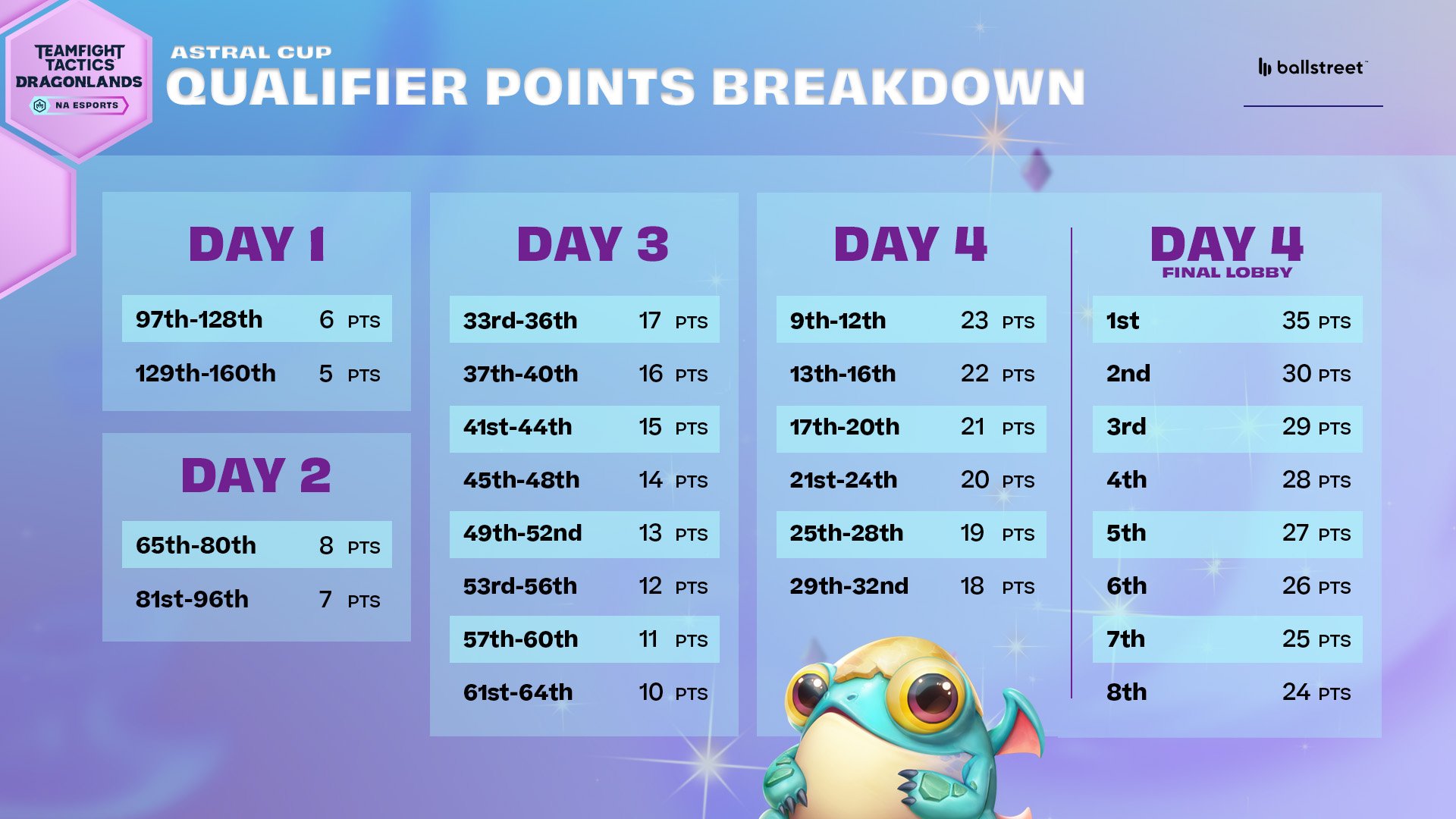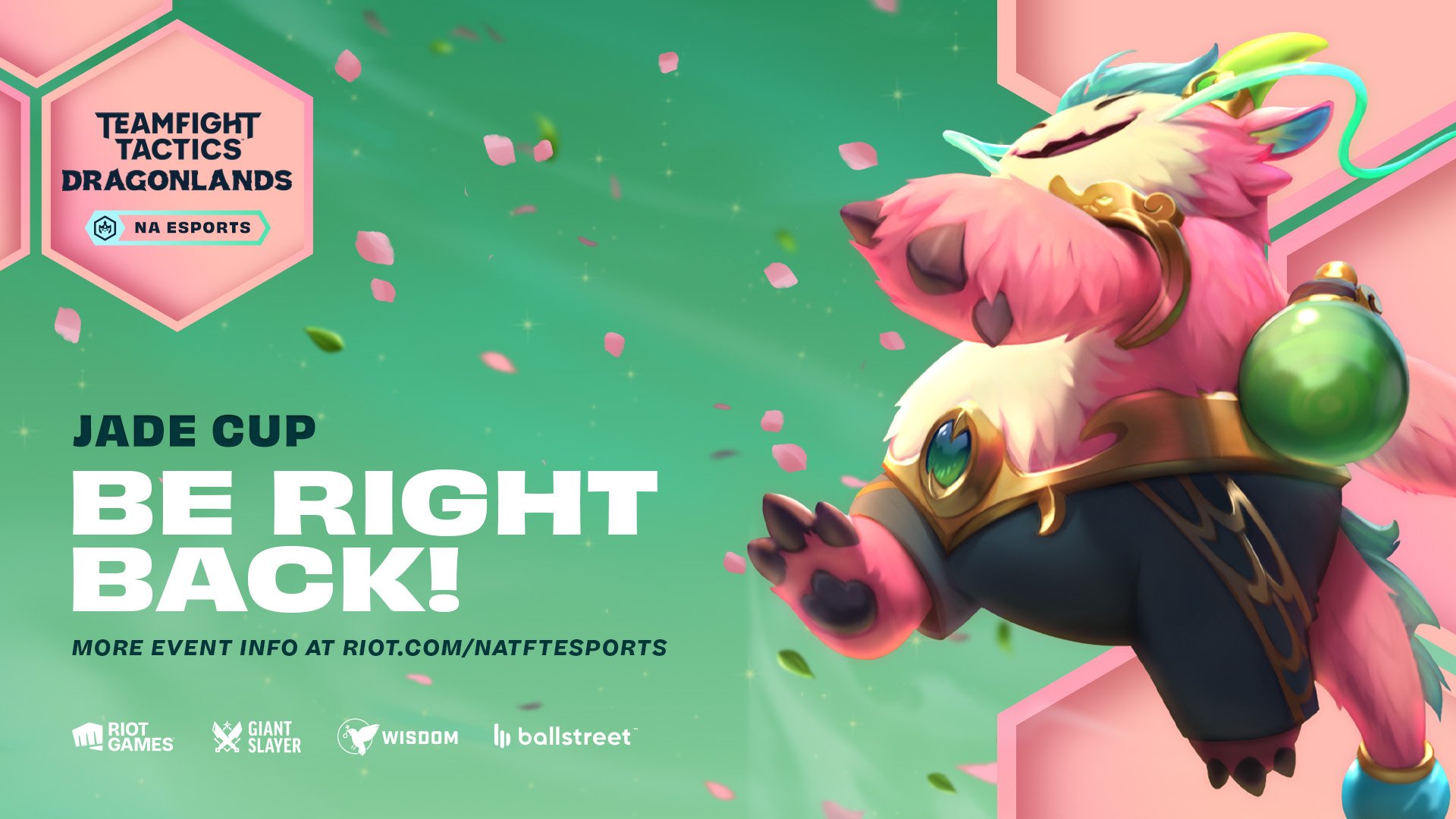
Broadcast UI Design
Teamfight Tactics
The Challenge
Riot Games’ Teamfight Tactics has regular tournaments that are streamed live on Twitch. Teamfight Tactics is a strategy game with a lot of relevant data produced during matches and it can be difficult to display large amounts of data with a limited amount of space that doesn’t detract from the game itself and is relatively readable even on mobile devices - as TFT is popular on iOS.
The Astral and Jade Cups saw nearly 200k total viewership (not including co-streams) and received positive feedback from both viewers and Riot. Changes made in the designs for these cups were used in future tournaments.
A Great Experience for Over 200,000 Viewers
As a Designer at Wisdom Gaming, I was tasked with the Creative Direction for the first 3 cups in the Dragonlands tournaments, as well as designing the broadcast graphics for the first 2 - the Astral and Jade Cups. Some new additions to the competitive format and how the game was displayed on the broadcast required some creative problem solving to get just right.
The Solution
Strategizing The Creative
One of our biggest clients at Wisdom Gaming was Riot Games - most well known for their massive MOBA game, League of Legends. A spin-off of League of Legends, called Teamfight Tactics, is an auto-battler game that focuses on strategy rather than reflexes.
For the 7th Season of Teamfight Tactics North American Esports, I was responsible for planning and executing all of the tournament broadcast graphics. I started by creating a mood board for each broadcast, making sure to stick within Riot’s existing brand guidelines for the season.
What I determined in the mood boards:
Using the provided names of the cup, determined which colors, characters, and animated elements would be featured for each tournament
Focusing on colors - developed a color palette for each Cup using the approved brand guidelines from Riot as well as colors from within the game itself and characters related to the theme of the Cup
Determined which Little Legends would be used in the promotional graphics as well as the broadcast graphics - making sure to plan ahead so that specific Little Legends could be used in future Cups as needed (ex. TFT had made a Little Legend version of a popular character, Yasuo, which was saved for the Finale)
By providing some ideas of what additional elements could be used in animated graphics, I gave our motion graphics designer a head start.
Seeing Stars in the Astral Cup
The first of the tournaments was the Astral Cup. I used references from the game as well as that season’s Little Legends (the player’s character in the game - we use the artwork of Little Legends in our graphics) to determine the theme, which was blues and purples, crystals, and sparkles!
After the broadcast graphics were complete, I attended a tech rehearsal to see if anything went awry between the Photoshop files and the broadcast software.
Using Design To Clear Up The Competition
As a new addition to the Astral Cup, our production team wanted to include graphics for the standings and point totals for all 64 participants. In addition, we wanted to include a graphic showing how points were being distributed, as well as showing that those in top 12, top 8, and top 4 got extra points depending on where they had placed.
We decided to split it into 2 screens: bottom 32 and top 32. The challenge with this was to make sure the two screens were understandably the bottom and top 32, as well as making the bonus points as clear as possible without taking too much space.
To solve this, I decided to color code the top 12, top 8, and top 4 players and added a very thin label that didn’t disrupt the flow of the rest of the players too much to save space. We also added a title on the top 32 screen specifying that those players got to advance to the last day of the tournament.
The Jade Cup Blooms
For Jade Cup, I took heavy inspiration from the Jade themed characters in Teamfight Tactics, who wore pink and green and featured cherry blossom petals floating in their artwork.
Pivoting To A New Strategy For The Vertical Split Screen
Something that I made note of from the Astral Cup was a new screen we had been testing out with two players’ views on screen at the same time. It didn’t feel quite right the first time around, so I made it a priority to revisit the layout for Jade Cup.
Using a screenshot from the final broadcast, I made sure that the crops for each player’s view were pixel perfect. This was important since Teamfight Tactics is an information-heavy game and every bit of the screen displays something important. I then took what we liked from the Astral Cup screen (the player icons and player names featured prominently) and polished it up by resizing and filling in the graphics at the top.
In Conclusion
Working on the Dragonlands broadcasts taught me a lot about broadcast UI, video graphics, and working with state-of-the-art gaming collateral. Because of this project, I was later trusted to work on a proposal for more work from Riot, specifically for their Valorant Collegiate tournaments.




























